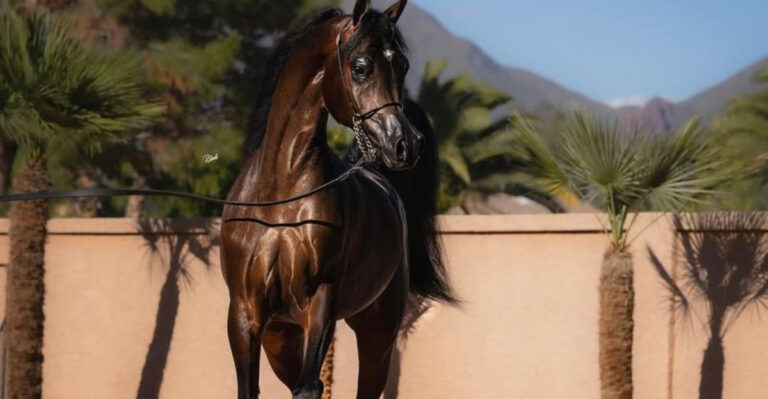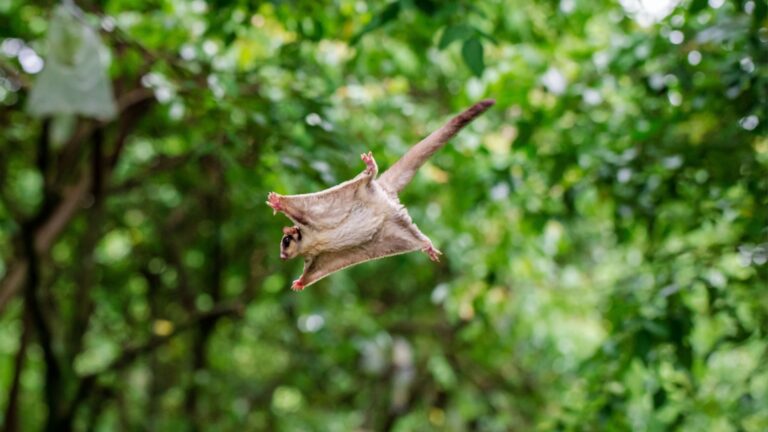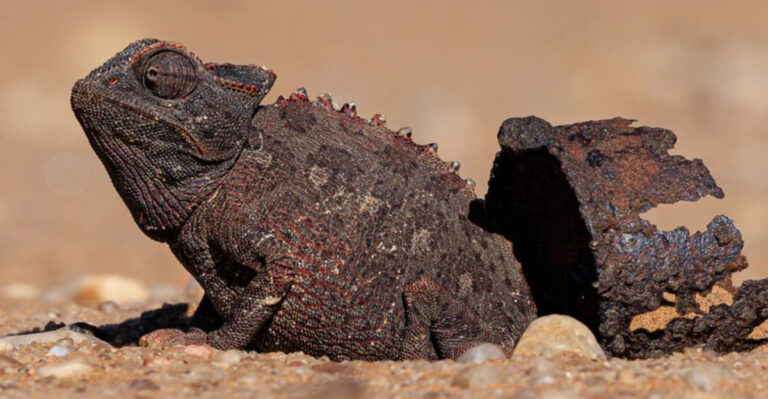The Woolly Rhinoceros Was A Majestic Prehistoric Giant That Roamed The Earth
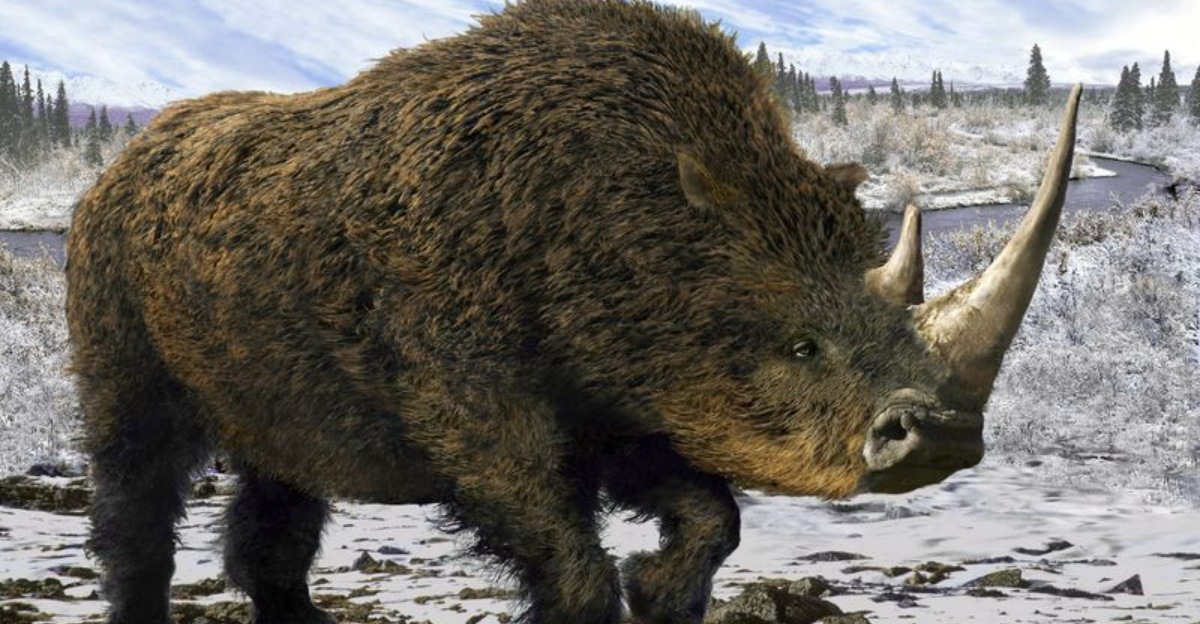
Long before humans built cities, woolly rhinoceroses thundered across Ice Age landscapes with their massive horns and shaggy coats. These incredible beasts stood taller than a modern car and weighed as much as several people combined!
Scientists have discovered their remains frozen in ice, giving us amazing clues about how these prehistoric giants lived thousands of years ago. Let’s explore the fascinating world of these ancient, furry rhinos that once ruled the frozen plains.
Massive Horns That Could Reach 3 Feet Long
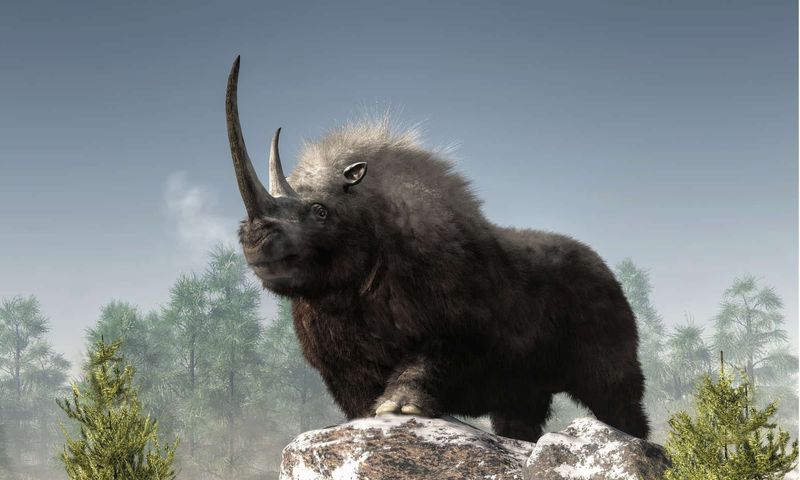
The woolly rhino’s most impressive feature was its enormous horn – sometimes growing longer than a yardstick!
Unlike modern rhinos with horns made of keratin (the same stuff as your fingernails), these prehistoric giants sported a front horn that could measure up to 3 feet in length.
What made these horns special was their slightly flattened shape, perfect for sweeping away snow to find food hidden underneath.
Some scientists think the males used these impressive weapons to fight each other during mating season, similar to how deer use antlers today.
Amazingly, several well-preserved horns have been found in permafrost, allowing researchers to study their exact size and structure.
Thick Fur Coat Perfect For Ice Age Survival
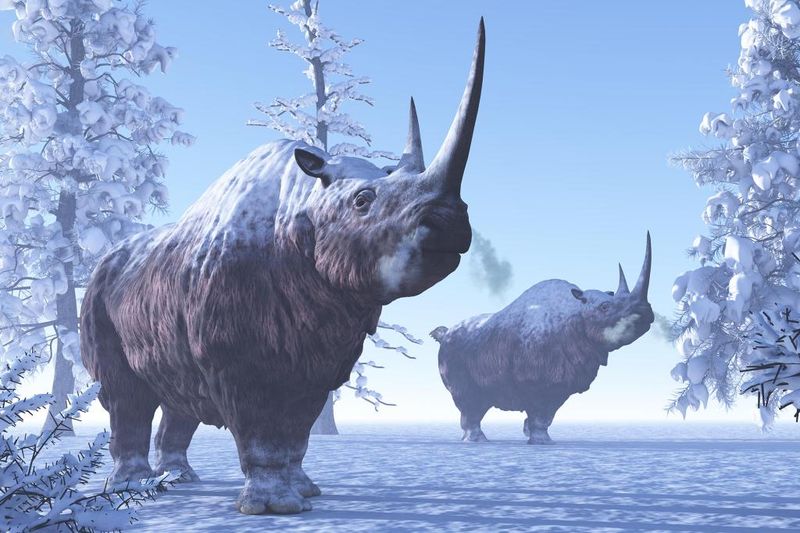
Imagine wearing the warmest, fuzziest winter coat ever – that’s what woolly rhinos had all over their bodies! Their thick, shaggy fur formed two layers: a dense, woolly undercoat for insulation and longer outer guard hairs that repelled snow and rain.
This remarkable adaptation allowed them to survive in temperatures that would freeze modern rhinos solid. Scientists have found actual fur samples preserved in the Siberian permafrost, revealing its reddish-brown color.
The woolly rhino’s ears and tail were also notably shorter than those of modern rhinos – another cold-weather adaptation that prevented frostbite and reduced heat loss in the harsh Ice Age winters.
Built-in Snow Plow On Their Faces

Talk about a handy winter tool! Woolly rhinos evolved with a unique flat plate of bone extending from their nose. This natural “snow plow” let them sweep aside deep snow to reach hidden plants underneath.
Cave paintings from ancient humans show this distinctive feature clearly, proving early people noticed this special adaptation too.
The rhino’s broad, flattened horn worked together with this facial structure, creating the perfect snow-clearing system.
Modern scientists discovered this specialized face shape wasn’t present in baby woolly rhinos – it developed as they grew up, showing it was specifically evolved for their adult lifestyle of foraging through snow-covered grasslands during the harsh Ice Age winters.
Prehistoric Giants Weighing Up To 4,400 Pounds
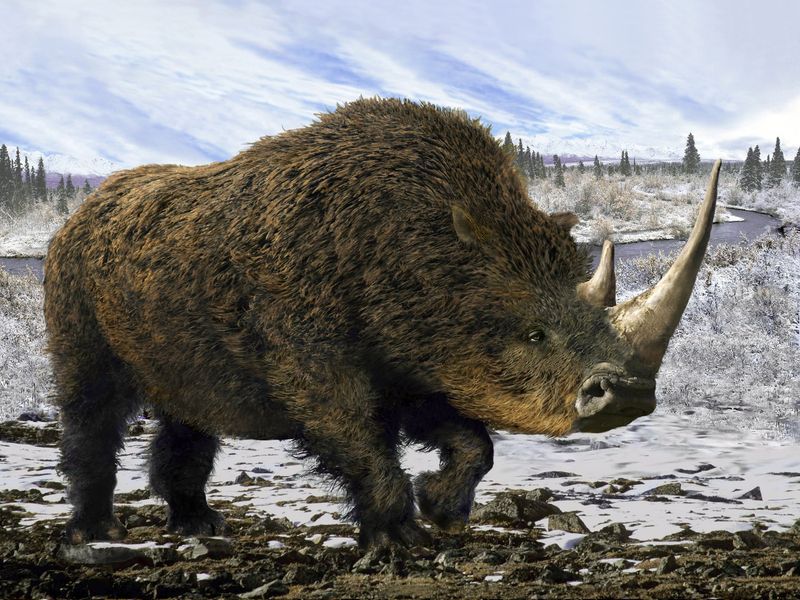
Woolly rhinos were absolute units! Standing about 6 feet tall at the shoulder and stretching 11 feet from nose to tail, these prehistoric tanks weighed as much as a modern SUV – up to 4,400 pounds of pure muscle and fur.
Despite their massive size, fossil evidence shows they had relatively slender legs compared to modern rhinos. This body design helped them move efficiently through snow-covered terrain while supporting their enormous weight.
Female woolly rhinos were slightly smaller than males, but both sexes sported impressive horns. Their massive bodies stored fat reserves that helped them survive harsh winters when food became scarce across the frozen landscapes they called home.
Cave Art Stars From 30,000 Years Ago

Ancient humans were clearly fascinated by woolly rhinos! They created stunning cave paintings featuring these magnificent beasts across Europe, with the most famous examples found in France’s Chauvet Cave dating back 30,000 years.
These prehistoric artists captured remarkable details – the rhino’s distinctive horn shape, shaggy fur, and even their characteristic posture. The abundance of woolly rhino images suggests they held special significance to our ancestors, perhaps as powerful symbols or important food sources.
Studying these ancient artworks helps scientists understand how woolly rhinos appeared when alive, complementing what we learn from fossils. The accuracy of these paintings shows early humans were keen observers of the natural world around them.
Grass-Munching Specialists With Unique Teeth
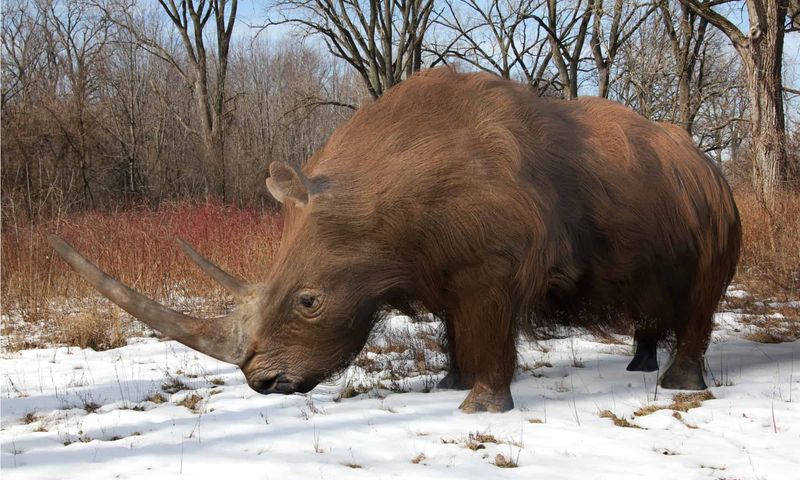
Woolly rhinos were the lawnmowers of the Ice Age! Their specialized teeth had high crowns and complex ridges perfect for grinding tough, gritty grasses that dominated the mammoth steppe ecosystem.
Scientists studying fossil teeth have found microscopic wear patterns that reveal exactly what these giants ate. Their dental design allowed them to process massive amounts of low-quality vegetation daily – they needed lots of fuel to maintain their enormous bodies!
Unlike some other Ice Age animals that browsed on shrubs and trees, woolly rhinos were committed grass specialists. This dietary adaptation worked wonderfully during the Ice Age but ultimately contributed to their extinction when climate change altered their grassland habitats at the end of the last ice age.
Frozen In Time: Perfectly Preserved Specimens
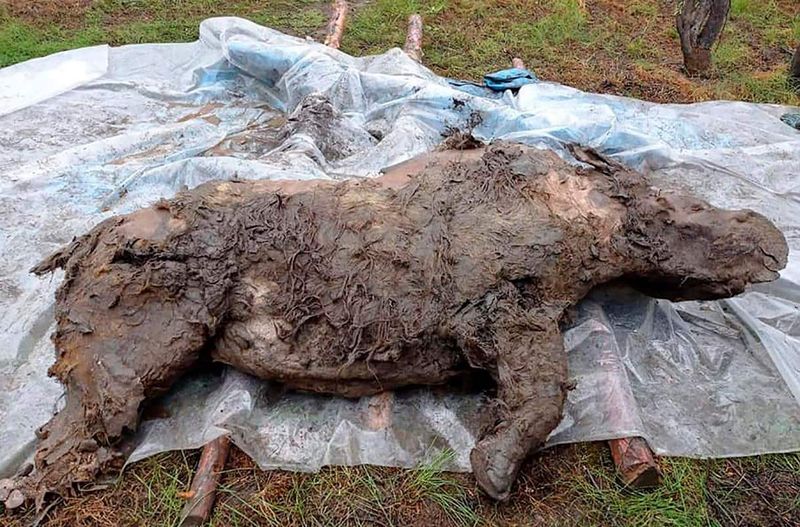
Mother Nature turned into the world’s best museum curator when she froze several woolly rhinos in permafrost!
In 2007, a baby woolly rhino nicknamed “Sasha” was discovered in Siberia with intact fur, skin, and even internal organs – giving scientists an unprecedented look at this extinct species.
Another remarkable find came in 2015 when the headless carcass of an adult woolly rhino emerged from thawing Siberian ground. Its strawberry-blonde fur and fat layers were still visible after 34,000 years!
These frozen time capsules allow researchers to extract ancient DNA, study stomach contents, and even identify the plants stuck between their teeth. No museum display could ever match the scientific value of these accidental ice mummies.
Shared Their World With Mammoths And Cave Lions

Woolly rhinos weren’t the only super-sized creatures stomping around Ice Age landscapes! They shared their territory with an all-star cast of prehistoric giants including woolly mammoths, cave lions, and giant deer with antlers spanning 12 feet.
This extraordinary community is called the “mammoth steppe fauna” – a unique ecosystem unlike anything alive today. Imagine herds of woolly rhinos grazing alongside mammoths while saber-toothed cats and dire wolves prowled nearby!
Early humans encountered this incredible animal kingdom too, hunting some species while creating art depicting others.
Fossil sites frequently contain remains of multiple Ice Age superstars together, showing how these diverse giants coexisted across the vast, grassy plains that stretched from Europe to Alaska.
Mysterious Disappearance Around 14,000 Years Ago
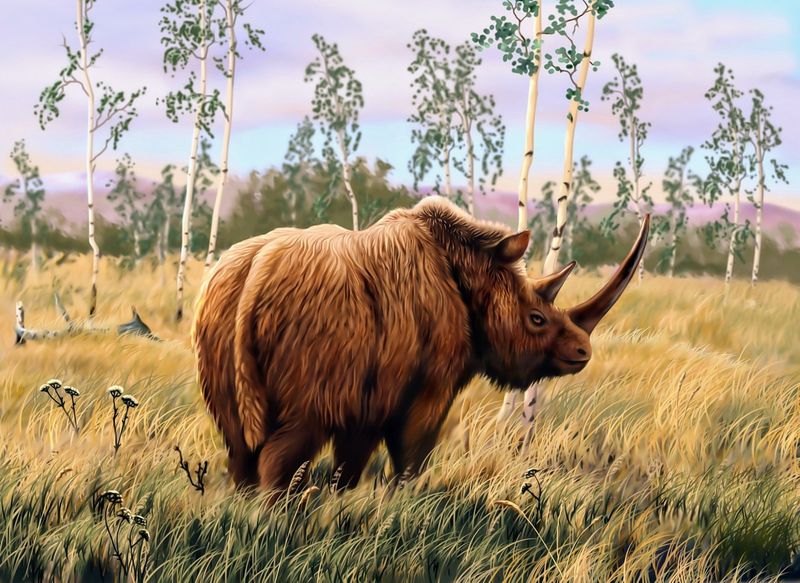
The mighty woolly rhino’s story has a puzzling ending. Around 14,000 years ago, these impressive beasts vanished forever, but scientists still debate exactly why.
The leading theory points to rapid climate change at the end of the last ice age, which transformed their grassland habitats into forests. Human hunting might have delivered the final blow to already struggling populations.
Ancient spear points have been found alongside woolly rhino remains in some locations, showing our ancestors definitely hunted them.
Recent DNA studies reveal another possible factor – genetic problems from inbreeding as their populations shrank.
This perfect storm of challenges – habitat loss, human hunters, and genetic weaknesses – likely combined to push these magnificent ice-adapted giants into extinction.
Closest Living Relatives: The Sumatran Rhino

Meet the woolly rhino’s modern cousin – the endangered Sumatran rhinoceros! With its hairy body and ancient appearance, this living rhino species gives us the best glimpse of what woolly rhinos might have been like.
Genetic studies confirm they share a common ancestor that lived about 26 million years ago. Both species evolved hair coverings, though the Sumatran rhino’s coat is much thinner than its Ice Age relative’s heavy-duty fur blanket.
Sadly, fewer than 80 Sumatran rhinos survive today in isolated pockets of Indonesia. Conservation efforts are underway to save this living connection to the prehistoric world.
By protecting the Sumatran rhino, we’re preserving the closest living link to the magnificent woolly rhinos that once roamed across the ancient world.

